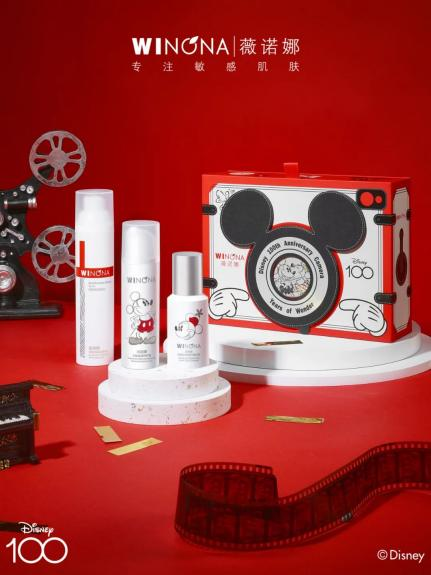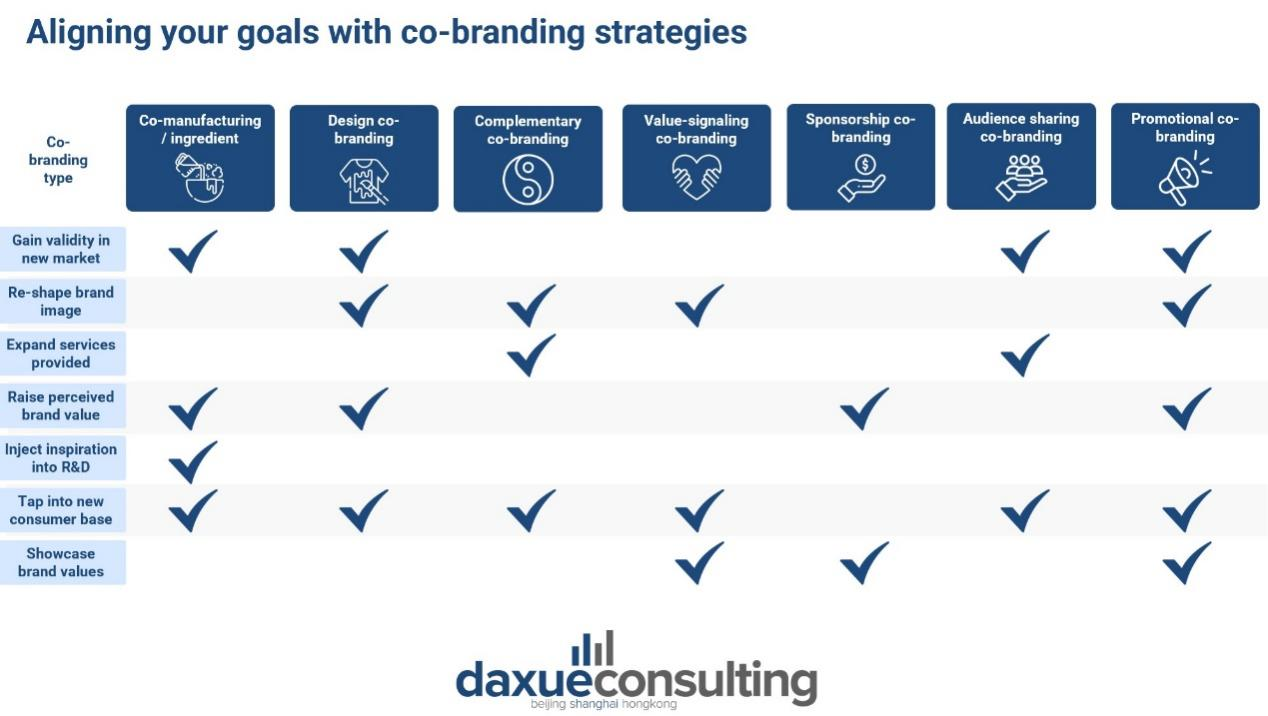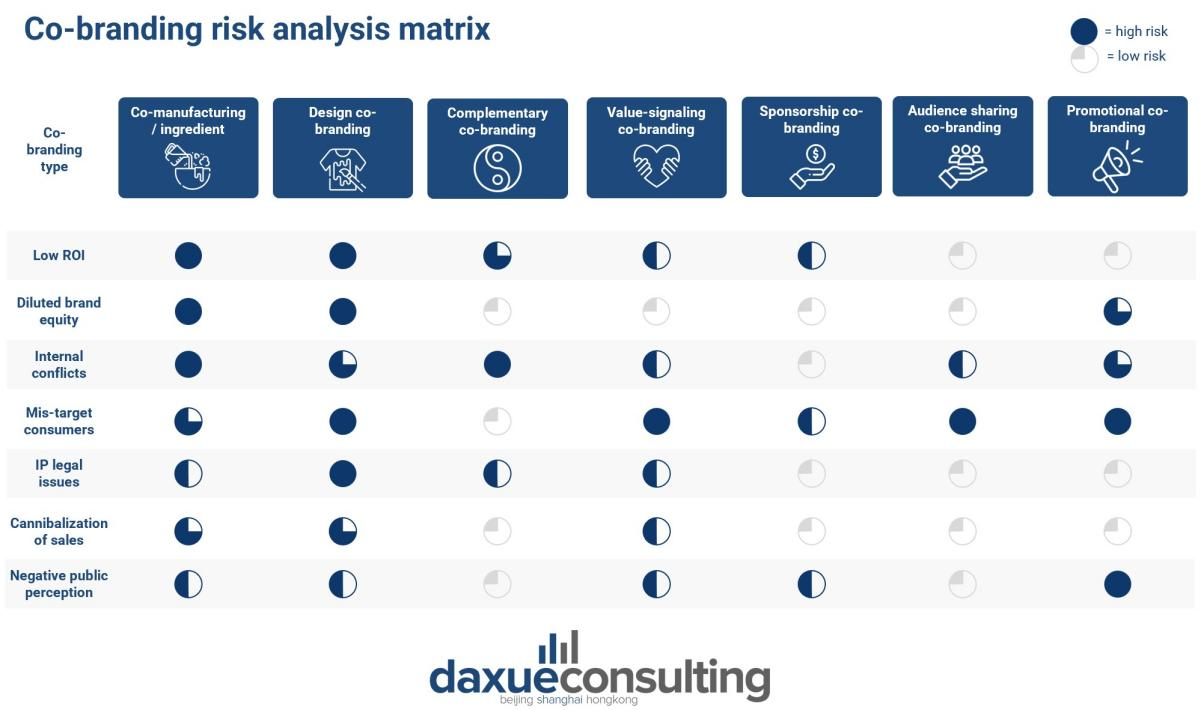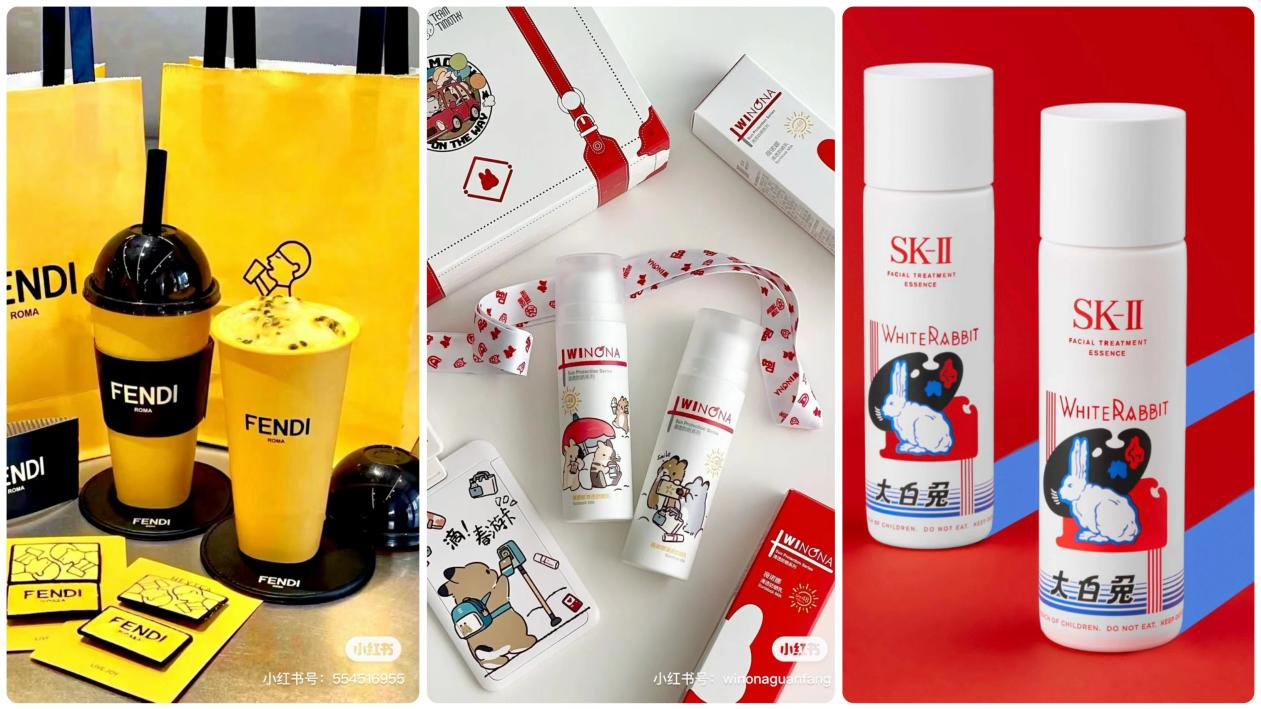In recent years, co-branding in China has become very popular, with a wide variety of co-branding targets, from food and drink, clothing, anime, and IP to games. This type of strategic alliance is highly effective in boosting sales and raising brand visibility. To tap into the Chinese market, international brands are diligently navigating the dos and don’ts of collaborating with Chinese counterparts. While some brands have achieved remarkable success through this approach, others have fallen short of their goals.
Download now our China luxury market report

Why do brands decide to engage in co-branding campaigns?
Co-branding is one of the important strategies for overseas brands in the process of market promotion and brand building in China. In the pursuit of reputation, foreign brands frequently partake in collaborative branding initiatives alongside renowned local entities. Collaborating with locally reputable brands helps them gain consumer trust and build a reliable image. For some foreign brands deeply rooted in the Chinese market, brand collaborations help expand their consumer base and present brand values. In recent years, overseas brands partnering with various local IPs have successfully attracted a large number of consumers. For example, collaborations like Pizza Hut and KFC with Genshin Impact have attracted a significant number of young Chinese consumers, especially ACG enthusiasts.
At the same time, brands can expand their offerings or add exciting co-branded products in a co-branding initiative with entities that already provide these services. Dove Chocolate has partnered with China’s leading local brand Moutai to launch wine-centered chocolates as part of its marketing strategy, attracting consumers’ curiosity while expanding its own product line and service offerings.
Co-branding collaborations are also a common way to demonstrate values such as sustainability, philanthropy, and cultural heritage in China. Collaborations with renowned museums and officials can highlight a brand’s values and respect for local culture, thus building a favorable brand image.
Learning from co-branding examples
HEYTEA and Fendi: A dual fusion of products and cultures
As a popular milk tea brand in China, HEYTEA has been co-branding with various brands and IPs for a long time. Last year’s co-branding with Fendi garnered a lot of attention, and was described as ” The first luxury of young people”. Fendi’s iconic black and yellow color scheme was used as the packaging design, and the complimentary badge, coasters, and paper bag with the Fendi logo attracted a large number of consumers. The co-branding campaign also incorporated Chinese characteristics to attract Chinese consumers. In the drinks, HEYTEA added the spice that is commonly used in the diet of the Yi(彝), and offered limited drinks and baked food in its offline teahouse.
At the same time, the company teamed up with the Fendi Exhibition to showcase embroidery and handbags that incorporate handcrafted techniques from ethnic minorities. The two brands share the same target audience of young people, who are the main consumers of milk tea and the core users of entry-level luxury goods. This cross-border co-branding collaboration not only attracted each other’s consumers but also demonstrated the seriousness of overseas brands about co-branding and their respect for the local culture by integrating traditional Chinese cultural heritage, laying a good reputation and word of mouth for brand visibility.

Winona and Disney: The payoff of heartfelt co-branding
During last year’s 618, Winona‘s collaboration with Disney set an example for the beauty industry. By amplifying the brand’s voice, Winona drives more users to engage in theme-related activities through entertaining and therapeutic means, thus facilitating the dissemination of marketing events. During 618, Winona launched a limited edition collection and custom gift boxes in commemoration of Disney’s 100th anniversary. The gift box, designed to resemble a vintage television set, elicits nostalgic memories of Disney cartoons. The company also carried out an amusement park-style “professional skincare experience pop-up shop”, combining Disney-themed entertainment activities with skin expertise provided by professionals to answer consumers’ queries.
This dual-purpose approach of combining playfulness and brand professionalism aims to deliver an immersive healing experience to consumers, facilitating a mutual transformation of online sales and offline experiences. It is Winona’s serious and professional attitude that distinguishes it from numerous international and domestic brands during Tmall 618, ranking it 9th in the beauty industry on Tmall. This achievement perfectly demonstrates to the market the immense returns that can be yielded from brand collaboration.

The failure of White Rabbit and SK-II
As an iconic candy brand in China, White Rabbit represents the nostalgia of countless individuals. In recent years, the brand has undergone revitalization through co-branding with items such as drinks and ice cream; however, due to the lackluster performance of joint branding and excessive marketing, some consumers started to pull away from the brand. SK-II collaborated with the White Rabbit to celebrate the Year of the Rabbit in the Chinese market, but the response was underwhelming.
The minimalist labeling on the original bottle and some packaging incorporating rabbit elements were not enough, and there was a lack of innovation in the product content, such as the absence of White Rabbit creamy candy-scented skin care products anticipated by consumers. Secondly, the mismatch between the brands’ positioning was also a factor in its failure to achieve success. White Rabbit, being a mass-market brand, and SK-II, an upscale skincare brand, consumers inevitably perceived SK-II’s involvement as a downgrade. The simplistic packaging design also undermined the brand’s image.

Tips for successful co-branding strategies in China
Setting goals and choosing strategies for success
Co-branding presents numerous advantages for a brand. Collaborating with a highly esteemed brand can elevate the brand’s perceived value and underscore its own worth. Co-branding types could be divided into seven types according to their different forms, and brands can choose corresponding co-branding strategies according to their desired goals.

Source: Daxue Consulting luxury report, co-branding strategies
However, varying strategic decisions entail inherent risks. Brands must weigh the investment against the potential returns. Collaborating across borders and cultures may lead to inaccuracies in market research and internal conflicts with partners. To effectively select an appropriate co-branding strategy, it’s imperative to factor in the brand’s positioning, strengths, as well as the prevailing social concepts and consumer attitudes within the target market.

Source: Daxue Consulting luxury report, co-branding risk analysis
Choosing the ideal partner for success
Before entering into a partnership, brands must carefully select the right brand partner, considering the alignment of their target audiences. If both parties share similar target groups, the collaboration is more likely to attract new consumers effectively. Conversely, partnering with brands targeting different demographics can broaden the audience base, although this approach carries inherent risks.
A notable success in this realm is the partnership between Luckin Coffee and Moutai, which managed to merge distinct brand identities effectively. However, the core values and brand images must also align to ensure a cohesive partnership; mismatches here can lead to adverse reactions. For example, the collaboration between HEYTEA and Durex received backlash from consumers, illustrating the potential pitfalls of co-branding efforts that fail to resonate with combined customer bases.
The optimal timing also holds significance
Timing is a crucial factor for brands considering co-branded launches, particularly for overseas brands aiming to connect with Chinese consumers during traditional festivals. An innovative (yet failed) example of this is SK-II’s collaboration during the Year of the Rabbit with White Rabbit, which cleverly tapped into cultural nostalgia and demonstrated the brand’s commitment to embracing Chinese traditions.
Contrastingly, Winona’s previous collaboration with Disney, despite the powerful branding, didn’t initially make significant waves. However, a subsequent co-branded initiative leveraged Disney’s 100th anniversary effectively. By releasing a limited product line timed just before the 618 shopping festival, Winona capitalized on the heightened consumer excitement. This timing, coupled with new product introductions and attractive discounts, not only captivated Disney enthusiasts but also drew in a broader audience, maximizing the campaign’s impact and reach. This example underscores the importance of strategic timing and cultural relevance in enhancing the effectiveness of co-branded partnerships.
Integration of cultural elements has become a popular way of co-branding
It has become very common for overseas brands to incorporate elements of local culture, such as museums and collaborative co-branding campaigns, which can have a profound impact on the success of a brand’s co-branding campaign. This integration not only enhances the brand’s cultural relevance but also fosters a sense of authenticity that resonates with local audiences. By aligning with established and historic cultural institutions or partnering with local entities, overseas brands can strengthen their positioning in the marketplace, build credibility, and deepen their connection with consumers.
In addition, such partnerships spanning a larger area can appeal to a wider range of consumer curiosity by virtue of novelty, often setting the brand apart from its competitors and thus contributing positively to the overall success of the brand’s co-branding campaign. This year, McDonald’s partnered with the Sanxingdui Museum in Sichuan, creating a significant contrast that piqued the interest of consumers. Incorporating elements of Chinese history, the new product was infused with local Sichuan culinary specialties, garnering positive reception from consumers.

Exploring co-branding opportunities in China
Co-branding can significantly boost profits, but for overseas brands looking to enter the Chinese market, it comes with inherent risks. Brands must meticulously assess various factors of potential collaborations, including the partner brand’s alignment with their own values and target demographics.
Additionally, timing and cultural relevance are crucial. Selecting culturally significant moments, such as local festivals or significant dates, can enhance a campaign’s resonance with the target audience. Understanding and respecting local culture and customs is essential for the successful introduction of overseas brands into the Chinese market. When these elements are carefully considered and integrated into the co-branding strategy, overseas brands have the potential to achieve substantial success in the competitive Chinese marketplace.
How to choose a co-branding partner in China
The successful examples above have showcased the possibility of breaking the dimensional wall and benefits for both brands through co-branding partnerships. However, failures of co-branding partnerships in China are great reminders that it is still very important for brands to remain cautious when choosing a co-branding partner in China. Factors brands should take into consideration include:
- Do I share the target market with the partner?
- What would the partner bring to my brand image?
- What are the risks of partnering with them?
Considerations to craft a co-branded marketing message in the Chinese market
One advantage of co-branding is it gives brands a chance to leverage elements that are not in their own brand image. For example, currently, as traditional Chinese culture is becoming cool and national pride is high, foreign brands that lack a Chinese image can still partner with Chinese brands. At the same time, new brands can partner with old brands to create a nostalgia marketing campaign.
It is worth testing co-branded marketing messages in consumer focus groups to make sure there is no slip-up or misunderstanding in the language. When done successfully, co-branding can reap invaluable benefits for a brand.
Key takeaways for co-branding in China
- Co-branding is a vital strategy for overseas brands entering the Chinese market.
- Successful co-branding often ties product launches to traditional Chinese festivals, enhancing cultural relevance and consumer engagement.
- Choosing a compatible co-branding partner is critical, with successful examples including the collaboration between Luckin Coffee and Moutai.
- Co-branding allows for product line innovation and market expansion, like Dove Chocolate’s introduction of wine-centered chocolates in partnership with Moutai.
- Brands use co-branding to demonstrate commitment to values such as sustainability and respect for cultural heritage, often partnering with museums and cultural institutions.
- Effective co-branding can significantly improve a brand’s market presence in China, but mismatches in brand values or target audiences can lead to negative outcomes, such as the HEYTEA and Durex collaboration.
- Despite potential risks, well-executed co-branding strategies can yield substantial benefits, driving brand growth and market acceptance.
Strategic co-branding in the Chinese market
As the landscape of co-branding in China continues to evolve, aligning with the right partner and timing your market entry can significantly enhance your brand’s success. At Daxue Consulting, we specialize in comprehensive market analysis and strategic planning to help international brands navigate the complex Chinese market. Our expertise in consumer trends, local culture, and market dynamics enables us to provide tailored insights that drive growth and innovation. Contact us today to learn how our consulting services can help you capitalize on co-branding opportunities and successfully expand your presence in China.






